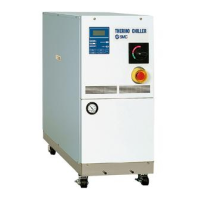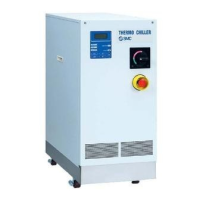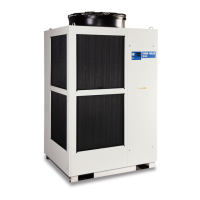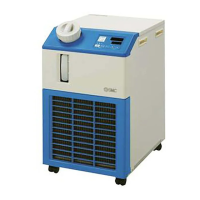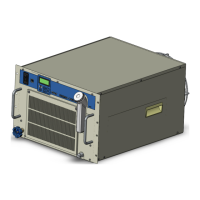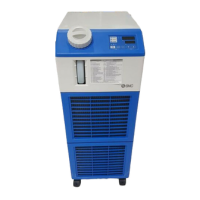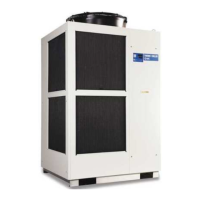[Tips]
<For HRS400-AN-46->
A set of thread adapters that converts the connections from Rc to NPT is
enclosed as an accessory. For NPT thread, be sure to use this adapter.
<For HRS400-AF46->
A set of thread adapters that converts the connections from Rc to G is
enclosed as an accessory. For G thread, be sure to use this adapter.
supplied or drained fluid to surrounding area and facility.
Use caution not to allow dust and foreign matter to enter the water
circuit, etc. during connection of piping.
Securely connect the piping at the piping port with specific wrench
when tightening.
Incorrect piping can burst when in service.
Use non-corrosive material for fluid contact parts for the circulating
fluid and/or facility water. The use of corrosive materials such as
aluminum or iron for fluid contact parts, such as piping, may not
only lead to clogging or leakage in the circulating fluid and facility
water circuits but also refrigerant leakage and other unexpected
problems.
Do not generate a rapid change of pressure by water hammer.
Internal parts of the product and/or the piping may be damaged.
